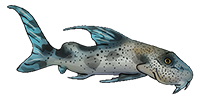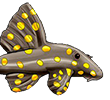1. Water parameters
a) Temperature range: 80-83 F. It's impossible to get any lower in the summer heat
b) pH: 7.6
c) GH: 8 drops. 140 ppm
d) KH: 4 drops. 50-100 ppm?
e) Conductivity or TDS (if GH and KH aren't provided)
f) Ammonia, Nitrate, Nitrite levels (Most LFS's will check your water and give a list of readings): 0,0-5, 0
g) Water change frequency: 25% weekly
h) "Routine" water treatments (e.g, chlorine/chloramine or ammonia neutralizers; pH or hardness adjustments, anti-stress chemicals, tank-cycling bacterial mixes). : Prime
2. Tank set up
a) Size : 10 gallons
b) Substrate: Sand
c) Filtration: Marina Slim 15 equipped with two sponges and biomax
d) Furnishings: Spiderwood and live plants
e) Other tank mates: 9 more pygmy corydoras, RCS, one nertie snail, MTS, a male betta introduced today
f) How long has it been set-up? : 6 months
g) Food used and frequency: I rotate between a few foods. Omega One shrimp pellets, Hikari micro pellets, Hikari wafers, frozen bloodworms, daphnia, mysis shrimp, and spirulina brine shrimp. I feed once a day and remove whatever is left after a couple hours.
h) Recent changes in the tank which occurred shortly before the disease/problem appeared (if any; e.g., changes in water source or water treatment, changes in decorations or substrate, replacement or changes of hardware (filters, heaters, etc.), and additions or removals of live plants or live fish): The affected corydora is new. It and 5 others were introduced the beginning of last week. I put in a new piece of spiderwood the day before I purchased the new corydoras and it very quickly went through the fungus process. Since I enjoy tannins I did not remove them all from the wood before putting it in the tank. A few days after introducing the corydoras I added more live plants from a trusted seller.
3. Symptoms / Problem description or history: I purchased 6 corydoras to add to the current 4 I had. A few days ago I noticed one of the smallest new corydoras had a band of white fuzz across it's head. Since it was still eating, swimming, and shoaling I didn't worry much. Today I noticed the fuzz has appeared on its tail and appears to be eating it away. It is still active and eating. The other corydoras do not appear to be affected.
4. Action taken (if any) : None so far. I'm planning on trying to catch it and quarantine it.
5. Medications used (if any) / changes in fish observed since treatment began (if any): None
The picture I managed to get is quite poor. I'll try to get a better one
White fuzz on corydora pygmaeus
-
sabrinah
- Posts: 49
- Joined: 16 Mar 2016, 04:50
- My cats species list: 2 (i:0, k:0)
- My aquaria list: 3 (i:0)
- Spotted: 2
- Location 1: USA
- Location 2: California




